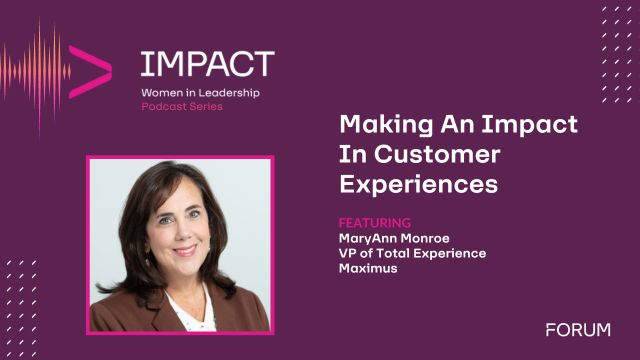 Robotic Process Automation (commonly known as RPA) is a hot topic right now in the Federal Government. G2Xchange’s Tim Harvey recently chatted about this disruptive technology with Jim Walker, who offers a unique perspective on the subject. Jim put the first RPA Bot into production in the Federal Government two years ago while working at the NASA Shared Services Center and he now serves as the Federal Chief Technology Officer with UiPath, one of the leading RPA companies in the marketplace.
Robotic Process Automation (commonly known as RPA) is a hot topic right now in the Federal Government. G2Xchange’s Tim Harvey recently chatted about this disruptive technology with Jim Walker, who offers a unique perspective on the subject. Jim put the first RPA Bot into production in the Federal Government two years ago while working at the NASA Shared Services Center and he now serves as the Federal Chief Technology Officer with UiPath, one of the leading RPA companies in the marketplace.
Can you Describe RPA and Talk About How is it Being Utilized in the Federal Government?
RPA is really simple in its execution and quite frankly not that difficult to set up at an agency. If a person does something with their computer screen, a mouse and a keyboard, and then makes a decision, that process is a candidate for RPA. Maybe I do something once a month using my keyboard and mouse, and I make a decision to download something or not. I could build that process for myself and it would be great for me. Each employee at an agency can automate solutions to free them from tedious but necessary work. Collectively, the agency gets a sizeable ROI with so many employees working smarter. RPA also allows for even better and bigger return on investment at the agency enterprise level.
For agency enterprise efforts, the ROI is incredibly high. Consider an agency with just one form (not that those exist). The form comes in 160,000 times a year and people must process it. Assume the form has around 59 data fields on it and five or six employees have to copy and paste 17 of those fields immediately upon arrival and put it into a spreadsheet. That’s 2.7 million times a year where an agency could possibly move data incorrectly. Instead, I can have that process automated by my digital employee, that you can think of as a digital intern. So instead of the employee doing the work when it comes in, a Bot can take those 17 fields, put them into the spreadsheet and then let me know when it is done. This is the same way I can ask an intern, “Please make 17 copies of this and tell me when you’re done.” When you think of the number of forms, applications, and the amount of information collected by all of our agencies it is obvious the savings in time, better use of people, elimination of backlog, improvements in compliance and audits all from a single solution. These forms and their processing are absolutely necessary, but it is not necessary that your most valuable asset (your people) perform the work.
You Touched on ROI. Can you can Talk More about the Return on Investment Government Agencies can Realize Using RPA?
When I first joined UiPath, I wrote a white paper on RPA Return on Investment. When I was with NASA, I would go to these conferences and I was constantly told that RPA takes 3 cents a minute to run. That’s not wrong, it’s just not correct either. The cost of the software in shrink wrap divided by the 525,000 minutes in a year would be about 3 cents a minute. What the ROI White Paper says is that you are going to need a developer and you’re going to need a server and you’re going to need a laptop or a virtual server. You’re going to need to factor in the contracting cost just to manage the contract. When we got through with it, we came up with about 21 cents a minute to run the Bot. At a shared services center where you are back-charging the agency for what they do, we needed to be able to tell them how much it was going to cost them and how we came to that conclusion. But we were also able to say that in the first year you must do all of that and 21 cents a minute is your cost. If you were to double the number of Bots in your second year, your cost goes down to 16 cents a minute because the infrastructure is already in place. The software that managed 10 Bots now manages 20 Bots.
RPA incentivizes the shared services organization or in the case of GSA, the CFO’s office, and encourages them to help the agency find the big money-makers. For the relatively small cost to procure RPA, they can get all the software they need for their first year. And when they go and automate a process that saves six people two hours a day, they’ve made their ROI as soon as that starts working, and the Bot may only work 20 minutes a day doing that. You can then assign that Bot to other tasks. In Government cost avoidance, savings, reduction in rework and errors, the ability to work digitally around the clock, elimination of backlog, adherence to compliance issues and the flexibility of the digital workforce are all new numbers agencies can factor into their ROI calculations. The biggest ROI is freeing people to perform the work they were intended to perform and integrating Bots into the process so we stop working for our computers.
How has RPA Usage Grown in Government and What Kind of Growth do you Expect in FY2020?
There has been tremendous growth in just the last few months. For the past two years, everyone’s been talking about the hockey stick and right now, we’re along the bottom of it. We have 52 agencies that are using UiPath and while those 52 organizations have made a good number of buys, they haven’t bought hundreds of Bots and solved multi-million dollar pricing problems just yet.
What we’re seeing now at the end of this fiscal year is that agencies are talking to us about the need to buy hundreds of Bots and the need to fix a multi-million dollar problem. That means that hockey stick may soon start to turn upwards and be a pretty steep climb over the next year or two. And quite frankly, I think it’s a lot of credit to the Administration. Federal CIO Suzette Kent constantly talks about Robotic Process Automation and Intelligent Automation. She has a memo out saying every agency should consider it.
You also have the CFO at the General Services Administration, Gerard Baddorek, who is the executive sponsor of the new RPA Community of Practice. The goal of this group is to help agencies accelerate their ability to efficiently and effectively scale and sustain an RPA program. There’s a tremendous amount of effort right now. And this is just the beginning. I tell people all the time that the investment they make in RPA today is their downpayment on intelligent automation tomorrow. There’s a huge opportunity for RPA to be that solid base for the Federal Government to start delivering services faster, better, cheaper, and on time.












